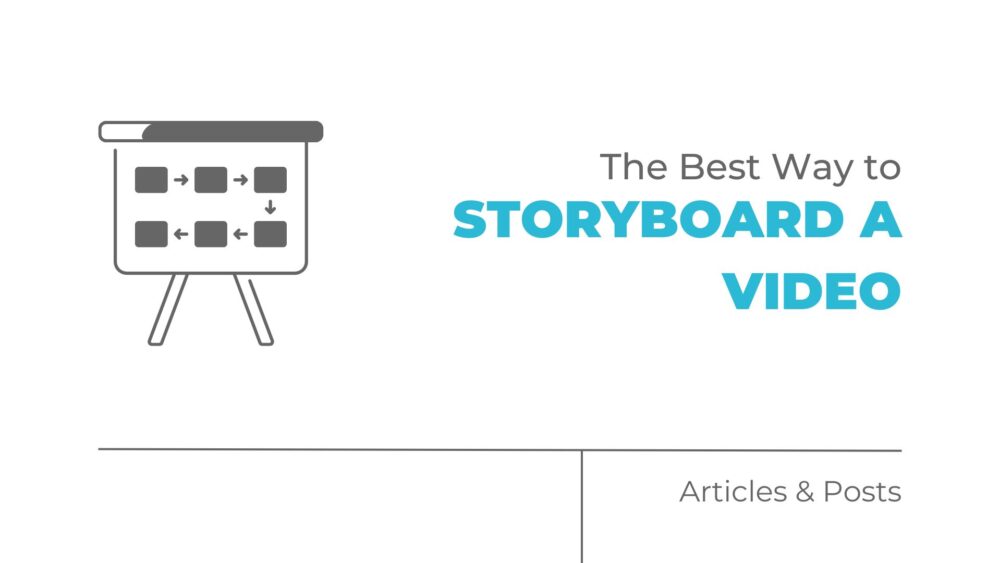Creating an engaging video starts with a well-thought-out plan.
A good storyboard not only helps you visualize your ideas but also makes the filming process smoother.
The best way to storyboard a video is to start by breaking down your script into key scenes, then create simple sketches or illustrations for each scene with detailed notes.
Use a template to organize your sketches and review the storyboard with your team to make sure everyone understands the plan.
This process helps visualize the video so its production goes smoother.
In this article, we’ll explore the best way to storyboard a video, including steps, timing, and essential rules.
How to Make a Good Storyboard for a Video
A good storyboard serves as the blueprint for your video.
It always begins with some good conceptualizing.
You need a clear concept of your video.
Define the main idea, target audience, and key messages.
Understand the narrative, message, and goals of your video.
What do you want your audience to take away from it – what do you want them to learn about your brand?
What Are the 7 Steps in Storyboarding?
Creating an effective storyboard involves a systematic process that can help you walk away confident in its effectiveness:
1. Write a Script: Develop a script that outlines the dialogue, action, and sequence of events. Divide your script into scenes and shots. Identify the key elements of each scene, including dialogue, action, and camera angles.
2. Identify Key Scenes: Break down your script into key scenes that are essential to the narrative. Create simple sketches or illustrations for each scene. You don’t need to be an artist – basic stick figures and shapes will suffice as long as they convey the idea.
3. Sketch Thumbnails: Create small, rough sketches of each key scene to visualize the composition and flow. Expand on your thumbnails with more detailed sketches and notes for each scene.
4. Add Detailed Panels: Include notes for each panel that describe the action, dialogue, camera movements, and other important elements.
5. Sequence the Panels: Arrange your panels in the correct order to map out the entire video. Utilize storyboard templates to keep your sketches organized. Templates help maintain consistency and cover all necessary details.
6. Review and Adjust: Go through your storyboard with your team. Review the storyboard, gather feedback, and make necessary adjustments to improve clarity and make sure everyone understands the plan.
7. Finalize the Storyboard: Once you’re satisfied with your storyboard, finalize it and share it with everyone involved in the production.
How Long Does It Take to Storyboard a Video?
The time it takes to storyboard a video can vary widely based on the complexity of the project.
For a simple video, storyboarding might take a few hours to a couple of days.
More complex projects with multiple scenes, intricate details, and extensive planning can take several days or even weeks.
Here are some factors that influence the time required:
- Project Complexity: More detailed and longer videos will naturally take more time to storyboard.
- Team Collaboration: Coordinating with a team can extend the timeline, as it involves multiple reviews and revisions.
- Level of Detail: The more detailed your storyboard, the longer it will take to complete.
What is the Basic Rule in Storyboarding?
The basic rule in storyboarding is clarity.
Your storyboard should clearly convey the visual and narrative flow of your video.
Each panel should provide enough detail to understand what’s happening in the scene, including action, camera angles, and dialogue.
Here are some tips to maintain clarity in your storyboard:
- Keep It Simple: Focus on conveying the main ideas without getting bogged down in artistic detail.
- Use Consistent Symbols: Develop a set of symbols for common elements (e.g., camera movements, characters) to maintain consistency.
- Include Notes: Add descriptive notes to each panel to explain actions, dialogue, and other important details.
- Review Regularly: Regularly review your storyboard with your team to make sure everyone understands and agrees on the vision.
At the End of the Day
Storyboarding is an essential step in the video production process that helps you visualize and organize your ideas.
By following a structured approach, you can create a clear and effective storyboard that guides your project from concept to completion.
Whether you’re a solo creator or part of a team, a good storyboard is key to producing a professional and engaging video.
If you need assistance with your storyboard, consider working with a video design company to bring your vision to life.


Comments are closed.